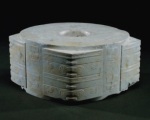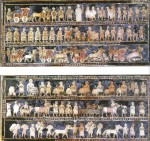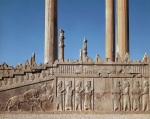Global Prehistory
30,000-500 BCE
Textbook: Chapter 1 and other selections
Khan Academy APAH Test Prep: Global Prehistory
Concurrent Dates
| 2.5 million BCE | Homo Habilis, first “tool” using primates/humans with limited speech |
| 40,000 BCE | Cro-Magnons (a branch of Homo Sapiens) first appears |
| 6000 BCE | Çatal Hüyük site begins |
| 5000 BCE | Egyptians created standardized calendar |
| 2500 BCE | First iron tools and weapons appear |
Cro-Magnons
Representation
Venus of Willendorf
Austria. 28,000 BCE limestone 4” high
Paleolithic Hierarchy of Depiction, Red Ochre, Venus Figure
Apollo 11 stones
Nambia, Africa. c. 25,500–25,300 BCE charcoal on stone
Provenance
Hall of the Bulls
Lascaux, France. 15,000 BCE largest bull 12’ long
Hunter magic, twisted perspective
Camelid sacrum in the shape of a canine
Mexico. 14,000–7000 BCE Bone
Subtractive sculpture
The Mesolithic and Neolithic Revolutions
Running horned woman
Algeria. 6000–4000 B.C.E. pigment on rock
Bushel with ibex motifs
Iran (Susa). 4200–3500 BCE painted terra cotta
Anthropomorphic stele
Arabian Peninsula. Fourth millennium BCE sandstone
Relief carving, high relief, low relief, bas relief, stele
Jade cong
Liangzhu, China. 3300–2200 BCE carved jade
Stonehenge
Salisbury, England. 2550 BCE circle is 97’ diameter, individual stones are 24’ high
Megaliths, henge, post and lintel system
The Ambum Stone
Papua New Guinea. c. 1500 BCE greywacke
form vs. function
Tlatilco female figurine
Mexico. 1200–900 BCE ceramic
Additive sculpture
Terra cotta fragment
Lapita, Solomon Islands, Reef Islands. 1000 BCE Terra cotta
Horror vaccui
The Ancient Near East
3500-500 BCE
Textbook: Chapter 2
Khan Academy APAH Test Prep: Ancient Mediterranean: Ancient Near East
White Temple and its ziggurat
Iraq (Sumeria). 3000 BCE mud brick and bitumen
Statuettes of Worshipers
Iraq (Sumeria). 2700 BCE Gypsum inlaid with shell and black limestone tallest figure is 3’ high
votive
Standard of Ur (War and Peace)
Iraq (Ur). 2600 BCE wood inlaid with shell, lapis lazuli, and red limestone
Mosaic, hierarchy of scale, register (frieze band, frieze)
Stele with the Law Code of Hammurabi
Iran (Babylon). 1780 BCE basalt 8’ high
patron, audience, cuneiform
Lamassu
Iraq (Citadel of Sargon II). 8th century BCE limestone 13’ high
Guardian figure
Audience Hall (Apadana) of Darius and Xerxes
Persepolis, Iran (Persia). 6th century BCE limestone
narrative
- Darius and Xerxes Receiving Tribute
- Venus of Willendorf
- Apollo 11 Stones
- Hall of Bulls
- Camelid Sacrum
- Running Woman
- Bushel with Ibex motifs
- Anthropomorphic Stele
- Jade Cong
- Stonehenge
- Ambum Stone
- Tlatilco Figure
- Terra Cotta Fragment
- White Temple and Ziggurat
- White Temple and Ziggurat, elevation
- Standard of Ur
- Stele of Hammurabi
- Lamassu
- Audience Hall of Darius and Xerxes
- Darius and Xerxes Receiving Tribute



















